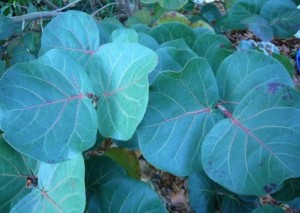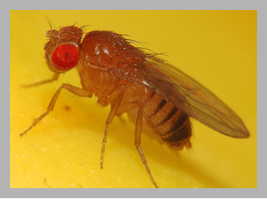
Rock Spring Run in winter
Canoes are the best way for you to sneak up on deer, unless of course you’re the kind of canoeist who uses the paddle and canoe like a drum set.
On a recent Sunday, I had barely turned up Rock Springs Run from the Wekiva River when four fat does spied me. They hesitated as they always do with a canoe, then ran into the brush, only to turn around and ford right in front of me. No, I did not get my camera out in time, but I have an excuse: I was actually in a skinny kayak, not my luxury liner canoe. Sudden moves in a kayak are wet moves. There will be another time. Farther upstream, I saw a doe and a near-independent fawn, both plump, as they should be, dining in on Cat O’ Nine tails.
It is said that if a lost person has found cattails, they have four of the five things they need to survive: Water, food, shelter and a source of fuel for heat—the dry old stalks. The one item missing is companionship. As a life-long bachelor and pseudo-hermit I am not sure about that. Seeing the deer reminds me the rivers of Florida were sources of food for Indians for thousands of years.
Surprisingly perhaps, all creatures living in Florida’s streams are edible, this includes snails, bivalves, fish, turtles, snakes, alligators and the like. They do have to be cooked, however, and many of them aren’t too tasty, especially the sails and bivalves. They are not Southern Escargot. They harbor bad bacteria and must be cooked. Even little lakes are full of “fresh water clams” in the mud, just off shore. But you absolutely must cook them, and make sure the lake water is wholesome. As for alligator, no matter how they cook it, it always has a swampy taste. It would be a good survival food but it does remind me of a minor incident in 2004 or so.
I was canoeing in the same area with a friend, Joe Guida. We were floating through a very narrow area during seasonal low water, about seven feet wide and five deep. We startled a sunning alligator on the bank that nearly jumped in the 18-foot canoe with us. Joe’s version of the events are a bit more dramatic but then again he and the alligator were on the same end of the canoe. I was about 20 feet away….
If I may digress even further a moment… I used to do a lot of hook and line fishing. In recent years I have switched to castnets almost exclusively but way back in the 70s I was bass fishing in a lot of Florida’s one-acre lakes. One day while fishing a “lake” no bigger than a baseball field I got a good tug on my line. I was using a plastic purple worm. I pulled, it pulled. I pulled more, it pulled more then stopped. I started to reel it in, which is actually a matter of prospective because the alligator on the other end was now swimming towards me. It was about five feet long and it did not seem pleased… That I can relate this stories attests to how fast I can run….
The number of edible plants along the run and river is numerous… pickerel weed, water hyacinths, wapato, lemon bacopa, spatter dock, oaks … But for the record I also saw non-edible wild begonias, vining milk weed, asters, several lilies and water hemlock, definitely not an edible. It was a hemlock species, read a close relative, that was used to knock off Socrates.
The hemlock —not related to the hemlock tree — grows in many wet spots in central Florida and can kill you in less than 15 minutes, certainly within an hour. The last death of said on record was a park ranger who mistook its roots for wild parsnip. He reportedly said, before the symptoms hit, that it was quite tasty. The state of Florida says in an official publication that the hemlock (Cicuta maculata et al) is the source of a lot of accidental “poisonings and death.” I would guess intentional poisonings and deaths would be called attempted murder and murder. A mouthful is a fatal dose, and the demise is not as gentle as Socrates’ was. It induces extremely violent symptoms which are “practically impossible to administer.” I have often joked that if any acquaintances of mine die from a plant poisoning my door is the first one the police will knock on. The practical truth is you can’t know which plants are edible without knowing which ones are poisonous.
When I missed the photo opt with the deer, I was kayaking up a stream I have canoed virtually dozens of times. I know the log-strewn stream, its bends, its stopping places, a little strip of pseudo rapids, and its plants and animals. It was the kayak that was the new element. Canoes and kayaks are as different as cars and planes. One rides on a canoe, but one wears a kayak.
If man plans his paddling trip well, all he needs is a little salt and pepper and a rod or net, catching and foraging for his needs along the way, just as everyone’s ancestor did not long ago. Most of the people in everyone’s family, save for the last 100 years, foraged for food most of the time, even when they grew some. There is also evidence that hunters and gathers were healthier than herders and growers.
If the civilized world were to end tomorrow and the survivors had to fend for food, the best advice is “get thee near water.” Life grows in and about water, be it fresh or salt. Water is where the food is. The two streams I was on have been a source of food for Indians for thousands of years.
Rock Spring Run is fed by a 14-million-gallons-a-day spring that fire hoses out of the side of a small cliff, if 12 feet can be a cliff. That is 441 gallons a second, 38 million a day, and 14 billion a year. The 72-degree water actually shoots horizontally out of a limestone grotto. Nowadays the grotto is barred like a jail – above and below water – and swimming is no longer allowed at the spring or basin. Years ago one could snorkel into the grotto, against the powerful current, and look for sharks teeth (all of Florida was once under ocean.) I can remember doing just that many holidays more than twenty years ago when the park was closed and I was young, foolish, and in much better shape.
The runs joins the Wekiva River eight miles down stream near a second spring, called Wekiwa Springs. Wekiva is Seminole for flowing water, and Wekiwa — with a ‘W’ — their word for bubbling water. Wekiwa Spring produces some 509 gallons a minute, 44 million a day, 16 billion a year. Combined at nearly 1,000 gallon a minute, 30 billion gallons a year, these springs create the run and the river. The water from both of these springs is called “young” which means the water flowing out today was rain 42 years ago, as opposed to hundreds of years ago or more. Further, the rain fell much farther north, all the way up into Georgia.
There are several such springs in the area of smaller size and occasionally one will even see a blind, white crayfish floating up from the rocky deep. I even have some pictures of one. They are edible I imagine, but it just doesn’t seem right, eating a blind, albino crayfish.
The Wekiva River flows north to the St. Johns River, and that flows north through the middle of the state exiting to the ocean at Jacksonville. The St. Johns is the only river in North American that flows north most of its length, and only the second one in the world to do so, after the Nile.
As for the deer, I now own my second waterproof camera. Let the kayak rock and roll. As for my first waterproof camera…. Maybe I will tell you some day what happened to it on Christmas Day, 2000.
ROCK SPRINGS RUN AND THE WEKIVA RIVER


